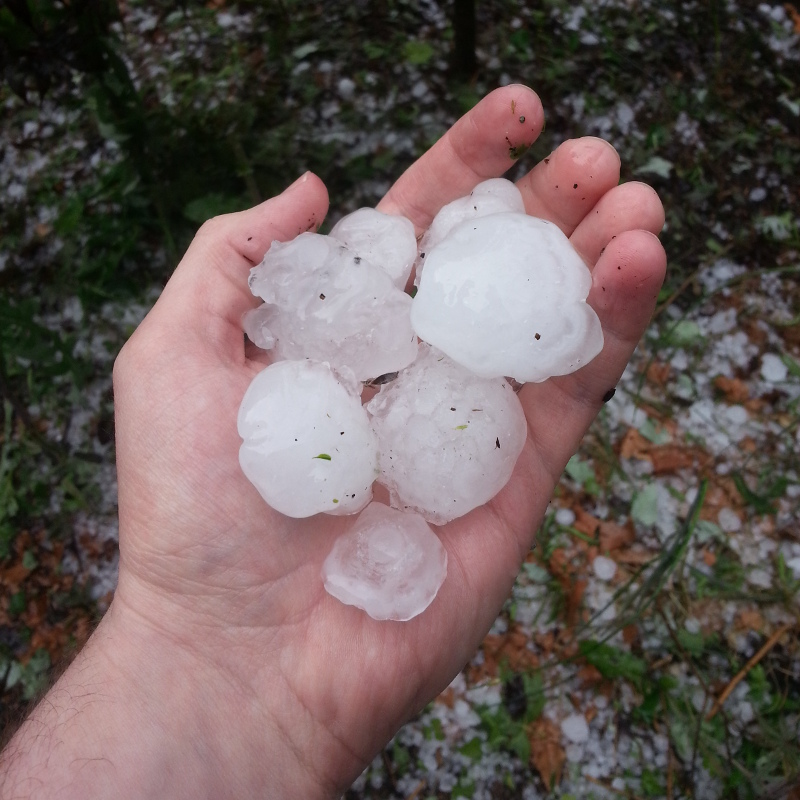You’ve probably all seen small hail before, with hailstones of an inch or less in diameter pelting the ground. They are interesting to look at, often with opaque interiors surrounded by clear ice shells. Bigger hail is much more rare and causes a lot more damage, both because it is larger in size and because the heavier stones fall at a lot faster rates since the drag of air does not slow them down much as they fall. The biggest stones may be several inches in diameter and often have a lot of spikes and odd shapes due to the way they form. How do you measure the size of such a beast? Atlas Obscura had an interesting article about this topic earlier in the week which you might find interesting. You can read it here.
